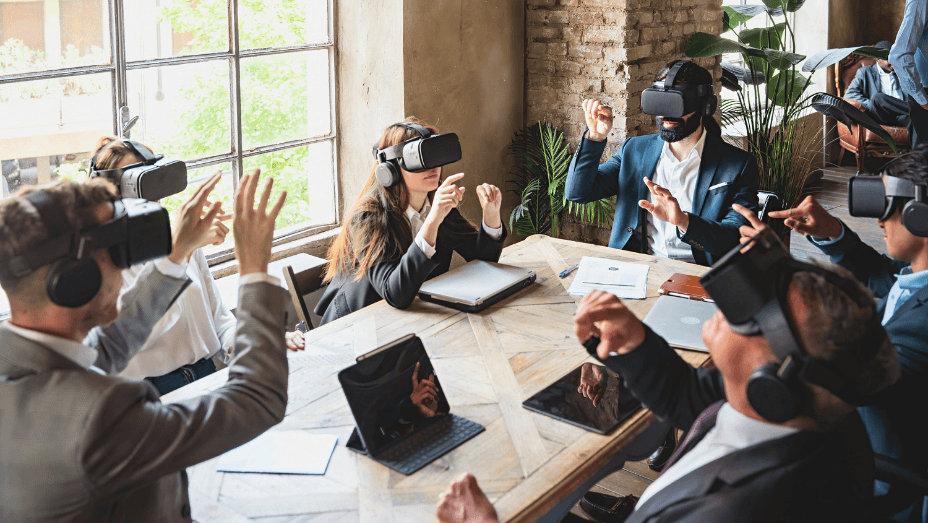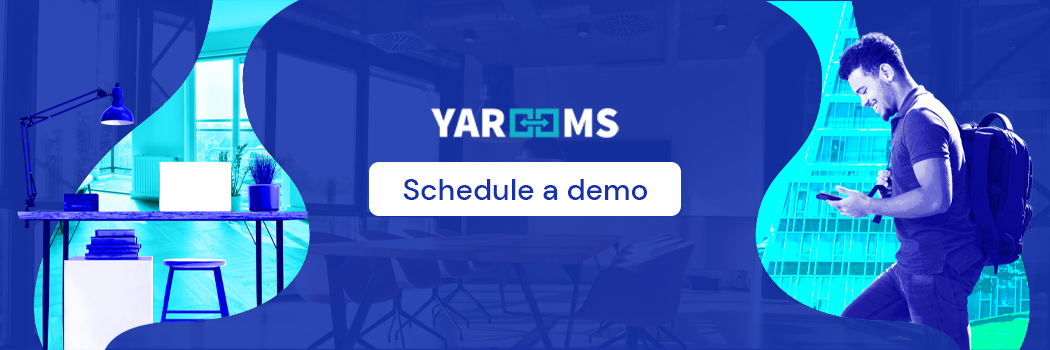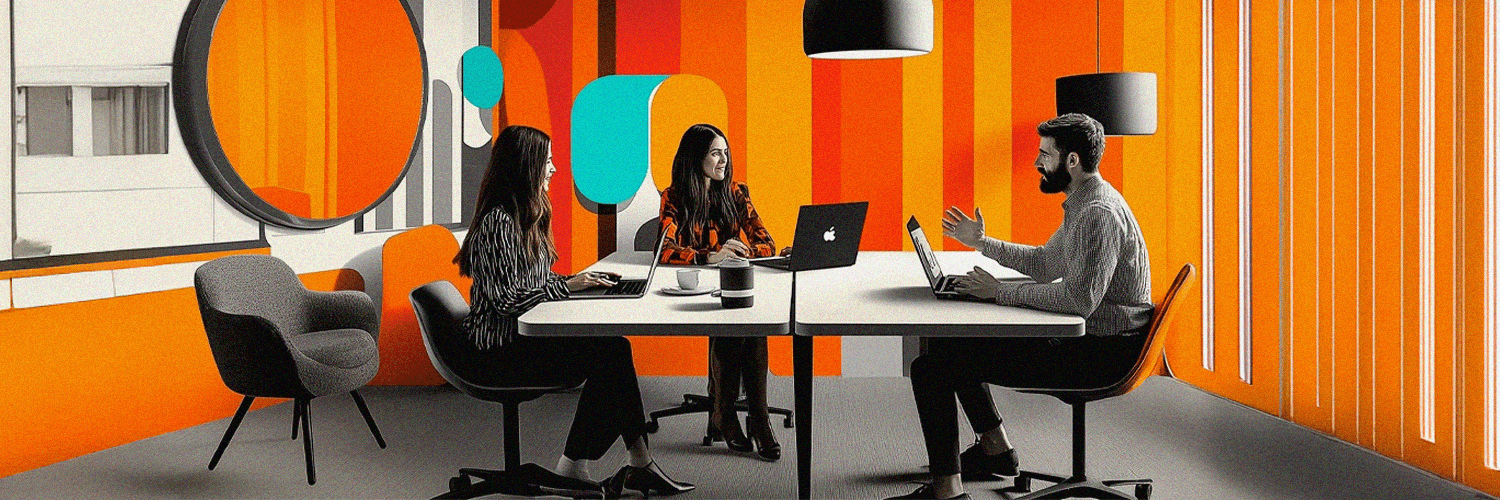In today's ever-evolving work landscape, the concept of a workplace has become fluid and transcendent. It's no longer confined by four walls or a particular location; instead, it's everywhere. Whether it's the familiar nook at home, the serene beach, or the traditional office setup, wherever you open up your laptop and immerse yourself in work, that's your workplace. Due in part to new hybrid and remote-working models, companies are struggling to find objective ways to gauge employee engagement and effectiveness—a critical challenge as labor costs have increased and worker productivity has declined. According to new McKinsey research, employee disengagement and attrition could cost a median-size S&P 500 company between $228 million and $355 million a year in lost productivity, meaning at least $1.1 billion in lost value per company in over five years.
So, with hybrid work no longer the buzzword but the norm, the spotlight has shifted to curating an exceptional workplace experience, irrespective of where one chooses to work.
TL;DR
- The modern workplace is evolving rapidly, and the distinction between office and workplace is fading. Employee engagement and productivity are critical, as disengagement can cost companies millions.
- With hybrid work becoming the norm, organizations need to focus on crafting an exceptional workplace experience. This involves allowing employees to co-create their work environment, encouraging open communication, offering flexibility, and recognizing their contributions.
- Technology plays a vital role in shaping the workplace, enhancing flexibility, enabling data-driven decisions, and providing customized experiences.
- Ultimately, the workplace of the future should be employee-centric, engaging, and designed in harmony with the evolving work landscape.
Redefining Workplace Experience in a World Without Boundaries
As the world adapts to the changing dynamics of work, it's crucial to understand the distinction between office experience and workplace experience. While the former encompasses every setting that enables work, the latter is about making the physical office space relevant, engaging, and beneficial.
For facility managers and organizational leaders, the challenge isn't just about bringing people back to the office, but making the office a place they want to come back to. The office, in this new age, should offer more than just a desk and a chair. It should be an intelligent hub of collaboration, a center for clear and effective communication, a diverse environment that caters to different working styles, and most importantly, a continuous learning and development arena.
Imposing a one-size-fits-all hybrid work model will leave your employees disengaged and fighting against an imposed status quo.
“One of the biggest challenges to hybrid work is the lack of alignment between the variability between what workers want and the predictability organizations, managers and workers need to be effective,” says Caitlin Duffy, director in the Gartner HR practice. “As employees' wants and needs have shifted, organizations must respond thoughtfully in order to maintain productivity and avoid attrition.”
As Gartner found, it’s no wonder that 77% of digital workers want to participate in creating their hybrid work model, while 14% prefer to have their hybrid work environment mandated. It becomes, then, crucial for leaders to allow employees to co-create their hybrid work model and tailor their workplace experience according to their expectations.

Empowering Employees: The Co-Creators of Tomorrow's Workplace Experience
So, how do we design an office that employees eagerly want to be a part of? The answer lies in not just hearing, but actively involving them in shaping the experience. When companies genuinely collaborate with their employees in designing a flexible work schedule, it is akin to an orchestra where each musician brings their unique melody to produce a beautiful symphony. This co-creation ensures that each employee's unique needs are catered to, creating a harmonious, efficient, and productive work environment. What should organizations do?
Encourage Open and Transparent Communication
One of the most important ways in which employees can become the co-creators of their workplace experience is through open and transparent communication. Encouraging employees to voice their ideas, concerns, and feedback allows for a more inclusive and democratic decision-making process. This not only empowers employees but also demonstrates that their opinions are valued and considered in shaping the workplace.
Allow Flexibility
Allowing employees to have a say in their work hours, remote work options, and the physical layout of the office can greatly enhance their satisfaction and productivity. Flexibility not only accommodates diverse needs but also promotes a sense of autonomy, which is vital in cultivating a positive workplace experience. As every individual has unique working preferences, by involving employees in the decision-making processes regarding office design and facilities, companies can ensure a more personalized, tailored workspace that caters to varied needs.
Acknowledge Ownership and Pride
When employees play a role in shaping their environment, it instills a sense of ownership. They're not just users of the space, but contributors to its very essence, which can lead to higher engagement and satisfaction levels.
Moreover, acknowledging their innovative ideas, hard work, and dedication through incentives, promotions, or other forms of recognition reinforces the idea that their efforts are instrumental in shaping the organization's future.
Extract Practical Insights
Employees, being the primary users of the space, often have practical insights that might be overlooked by designers or management. Their daily experiences can offer valuable feedback on what works and what doesn't.
Foster a Culture of Continuous Learning and Development
When organizations provide opportunities for skill-building, personal growth, and career advancement, employees feel a stronger sense of ownership over their professional journey. This sense of ownership extends to the workplace experience, as employees become more invested in creating a thriving and evolving environment.
According to McKinsey, there are 12 factors that affect employees’ satisfaction and commitment levels out of which the first six capture nearly two-thirds of the total cost to companies from disengagement. The top down six factors are: inadequate total compensation, lack of meaningful work, lack of workplace flexibility, lack of career development and advancement, unreliable people at work, unsafe workplace environment. For most companies, a significant number of employees are experiencing at least one of these factors, driving dissatisfaction and disengagement and, ultimately, lower self-reported performance. Put simply, these engagement factors have become disengagement factors for a large portion of the workforce.
Address The Cognitive Culprits
When it comes to involving employees in the creation of hybrid work schedules, some leaders may unknowingly fall victim to cognitive biases. These mental shortcuts can cloud their judgment and impede effective decision-making, resulting in less-than-ideal outcomes. There are two most common cognitive biases that can hinder leaders from seeking employee input in co-creating hybrid work schedules:
- The status quo bias makes leaders hesitant to consider new approaches to hybrid work, fearing disruptions to established routines. Consequently, employees may be left out of the decision-making process. Overcoming this bias involves acknowledging the changing work landscape and the benefits of employee involvement in shaping hybrid work models.
- The empathy gap can lead to a lack of understanding between leaders and employees regarding the importance of co-creating hybrid work schedules. Leaders must actively seek to empathize with employees, practice active listening, and genuinely consider their input. Addressing these biases enables leaders to make more informed decisions, fostering an environment that supports collaboration, innovation, and the success of a hybrid work model.
Recognizing and addressing these biases ensures that the organization truly taps into the collective wisdom of its workforce, crafting a future-fit hybrid work model. So, when companies fully embrace openness, flexibility and a change of mindset, they not only create a more engaging and fulfilling work environment but also foster a sense of unity and shared purpose among their workforce.
Navigating the Shift With Technology
It's undeniable that technology is the linchpin holding the vast expanse of the modern workplace experience together. It is shaping the future workplace by making it more efficient, productive, and flexible. These changes are driven by advancements in artificial intelligence (AI), communication and data analytics, creating fresh opportunities for workers and businesses. Here are some examples:
Enhanced Flexibility and Remote Work Options
Communication and collaboration tools have revolutionized the way employees work. With the advent of video conferencing, project management software, and cloud-based document sharing, employees can contribute to their work environment from anywhere. For example work planning calendars provide a visual representation of tasks, deadlines, and team availability, enabling employees to view their hybrid schedules along with available office space and ensure that their office space bookings match their work commitments.
This newfound flexibility not only accommodates diverse needs but also encourages employees to have a say in how and where they work.
Data-Driven Decision-Making
On the other hand, technology allows organizations to gather and analyze vast amounts of data on various aspects of the workplace, from employee productivity to office space utilization. Employees can play an active role in shaping their work environment by providing feedback and insights through these data collection methods. This data-driven decision-making ensures that workplace adjustments are based on concrete information and align with employees' preferences.
Customized Work Experiences
At the same time, personalization is a significant trend in the workplace, and technology makes it possible to offer customized experiences. From personalized communication channels to tailored workspaces, employees can use technology to set their preferences, driving a more enjoyable and productive work environment that caters to their individual needs.
Space booking tools help employees reserve meeting rooms, workstations or other facilities in advance and coordinate work activities. At the same time, managers gain insights into office space usage and can make informed decisions about office layout and resource allocation based on actual usage data.
Employee Feedback Platforms
Many organizations utilize technology to create platforms where employees can provide feedback, voice concerns, and share ideas regarding their workplace experience. These platforms can be anonymous, fostering open and honest communication. Technology ensures that this feedback reaches decision-makers, allowing employees to actively influence changes and improvements within the organization.

Tech’s Power Combined in a Workplace Experience Software
So, whether it's solutions that enable real-time collaboration among global teams, AI-driven tools that offer personalized learning experiences, IoT devices that adapt office conditions according to user preferences, or any other software that enables a positive workplace experience, tech plays a pivotal role. Business leaders in every sector have an opportunity to strategically reshape the workplace by aligning it to the organization’s purpose, expressing the workforce strategy, while using a workplace experience software to enhance their workspace, boost employee engagement, and simplify daily operations.
A workplace experience software works like an all-in-one platform integrating different components, ranging from scheduling resources to collaborative tools, for seamless management. Fundamentally, this software's goal is to enhance the overall employee experience by establishing a setting that encourages innovation, efficiency, and employee well-being. It achieves this by automating tasks that were previously time-consuming, like reserving meeting rooms or office equipment, which frees up valuable time and promotes a more efficient workplace.
For example, YAROOMS is a comprehensive workplace experience software solution designed to optimize workspace management and enhance the employee experience. It offers features like resource scheduling and collaboration tools, enabling efficient booking of meeting rooms and seamless communication. The software provides real-time occupancy data for informed decision-making and is accessible on mobile devices for on-the-go convenience. YAROOMS is highly customizable to suit the specific needs of organizations and offers analytics and reporting to help optimize workspace utilization. It empowers organizations to create a workspace that fosters creativity, productivity, and employee well-being simply by making the workplace work harder for the business and its employees.
A Feast of Reasons to Return to Office
Are there reasons to believe employees are eager to return to the office? As the same previously mentioned Gartner survey reveals, there is a set of diverse motivators for digital workers to return to the office, namely:
- “Facetime” — 40% of workers listed “facetime” (i.e., meeting face to face), whether that be with colleagues, managers or senior leaders, as their first motivator.
- Workplace amenities — 45% of workers shared that other aspects of the workplace would be their number one motivator, such as office equipment (ergonomic desks, monitors, printers, and Wi-Fi), ability to focus, workplace belonging, in-person IT support, and office amenities like parking, fitness centers, daycare, and lunch.
- Consequences — Only 10% of workers shared that consequences, such as expectations from their manager or concern they would be at a career disadvantage, would be their main motivator.
It’s, thus, up to the organization to ensure they provide options catering to their employee expectations. By allowing employees to define their hybrid schedules, organizations can tailor the office experience, driving satisfaction and commitment and making the office a welcoming destination.
Wrapping Up
The office of the future, as depicted by the World Economic Forum, is not just a physical location. It's an amalgamation of experiences and ecosystems crafted in harmony with its primary stakeholders: the employees. Rather than mandating more in-office time in rigid or mechanistic ways, leaders can look at this new reality as an opportunity to engage with their employees and to think through how to amplify their impact via mentorship, collaboration, and interaction with others across working models. This approach also increases the likelihood that their high engagement and performance levels remain sustainable over time.
The challenge for leaders and managers is learning how to measure employee effectiveness without a bias toward presence. In the State of Organizations research, McKinsey found that only 15% of managers said they are comfortable managing remote and hybrid teams. As disruptive technologies like AI and generative AI change the nature of work, humans will be focusing more and more on innovative tasks that require creativity, collaboration, judgment, alignment, and team problem solving (and the correspondingly high levels of trust). By adopting a collaborative model, companies can usher in a wave of workplace experiences that truly resonate, engage, and inspire and place them ahead of the curve.












